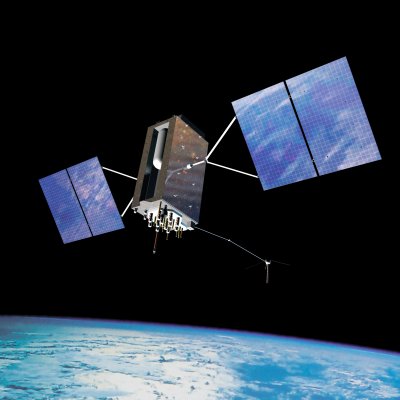Lockheed Martin-Built GPS Satellite Achieves 10 Years Of On-Orbit Operations

The third Global Positioning System Block IIR (GPS IIR-3) satellite, designed and built by Lockheed Martin [NYSE: LMT] to provide significantly improved navigation capabilities for military and civilian users worldwide, has reached 10 years of successful on-orbit operational service.
 The satellite was launched on Oct. 7, 1999, and is one of 30 GPS spacecraft currently on-orbit, providing critical situational awareness and precision weapon guidance for the military. The constellation also supports a wide range of civil, scientific and commercial functions - including air traffic control, ATM banking, and the Internet.
As the prime contractor for the GPS IIR program, Lockheed Martin Space Systems, Newtown, Pa., designed and built 21 IIR spacecraft for the Global Positioning Systems Wing, Space and Missile Systems Center, Los Angeles Air Force Base, Calif. The final eight spacecraft, designated Block IIR-M, were modernized to enhance operations and navigation signal performance for military and civilian GPS users around the globe. The current fleet of Block IIR and IIR-M satellites within the overall GPS constellation has reached over 100 cumulative operational years on-orbit.
"This milestone is a testament to the outstanding efforts our industry-government team has dedicated to this critical program over the past decade," said Don DeGryse, Lockheed Martin's vice president of Navigation Systems. "We are incredibly pleased with this impressive record of performance and longevity as we continue our mission to provide superior capabilities to the warfighter as well as millions of civil users around the globe."
The U.S. Air Force's next-generation GPS spacecraft, known as GPS III, being built by a Lockheed Martin-led team that includes industry partners ITT of Clifton, N.J. and General Dynamics of Gilbert, Ariz., is proceeding on-schedule in the Critical Design Review (CDR) phase of the program.
GPS III will improve position, navigation and timing services and provide advanced anti-jam capabilities yielding superior system security, accuracy and reliability. The next generation GPS IIIA satellites will deliver significant improvements over current GPS space vehicles, including a new international civil signal (L1C) and increased M-Code anti-jam power with full earth coverage for military users.
The team is in the process of executing 70 individual CDRs for all GPS III Space Vehicle subsystems, assemblies and elements.
The review phase will culminate in the third quarter of 2010 with a final Space Vehicle CDR that will validate the detailed GPS III design to ensure it meets warfighter and civil requirements. The team is on track to launch the first GPS IIIA satellite in 2014.
The satellite was launched on Oct. 7, 1999, and is one of 30 GPS spacecraft currently on-orbit, providing critical situational awareness and precision weapon guidance for the military. The constellation also supports a wide range of civil, scientific and commercial functions - including air traffic control, ATM banking, and the Internet.
As the prime contractor for the GPS IIR program, Lockheed Martin Space Systems, Newtown, Pa., designed and built 21 IIR spacecraft for the Global Positioning Systems Wing, Space and Missile Systems Center, Los Angeles Air Force Base, Calif. The final eight spacecraft, designated Block IIR-M, were modernized to enhance operations and navigation signal performance for military and civilian GPS users around the globe. The current fleet of Block IIR and IIR-M satellites within the overall GPS constellation has reached over 100 cumulative operational years on-orbit.
"This milestone is a testament to the outstanding efforts our industry-government team has dedicated to this critical program over the past decade," said Don DeGryse, Lockheed Martin's vice president of Navigation Systems. "We are incredibly pleased with this impressive record of performance and longevity as we continue our mission to provide superior capabilities to the warfighter as well as millions of civil users around the globe."
The U.S. Air Force's next-generation GPS spacecraft, known as GPS III, being built by a Lockheed Martin-led team that includes industry partners ITT of Clifton, N.J. and General Dynamics of Gilbert, Ariz., is proceeding on-schedule in the Critical Design Review (CDR) phase of the program.
GPS III will improve position, navigation and timing services and provide advanced anti-jam capabilities yielding superior system security, accuracy and reliability. The next generation GPS IIIA satellites will deliver significant improvements over current GPS space vehicles, including a new international civil signal (L1C) and increased M-Code anti-jam power with full earth coverage for military users.
The team is in the process of executing 70 individual CDRs for all GPS III Space Vehicle subsystems, assemblies and elements.
The review phase will culminate in the third quarter of 2010 with a final Space Vehicle CDR that will validate the detailed GPS III design to ensure it meets warfighter and civil requirements. The team is on track to launch the first GPS IIIA satellite in 2014.



.jpg)



.png)

Comments
There are no comments yet for this item
Join the discussion